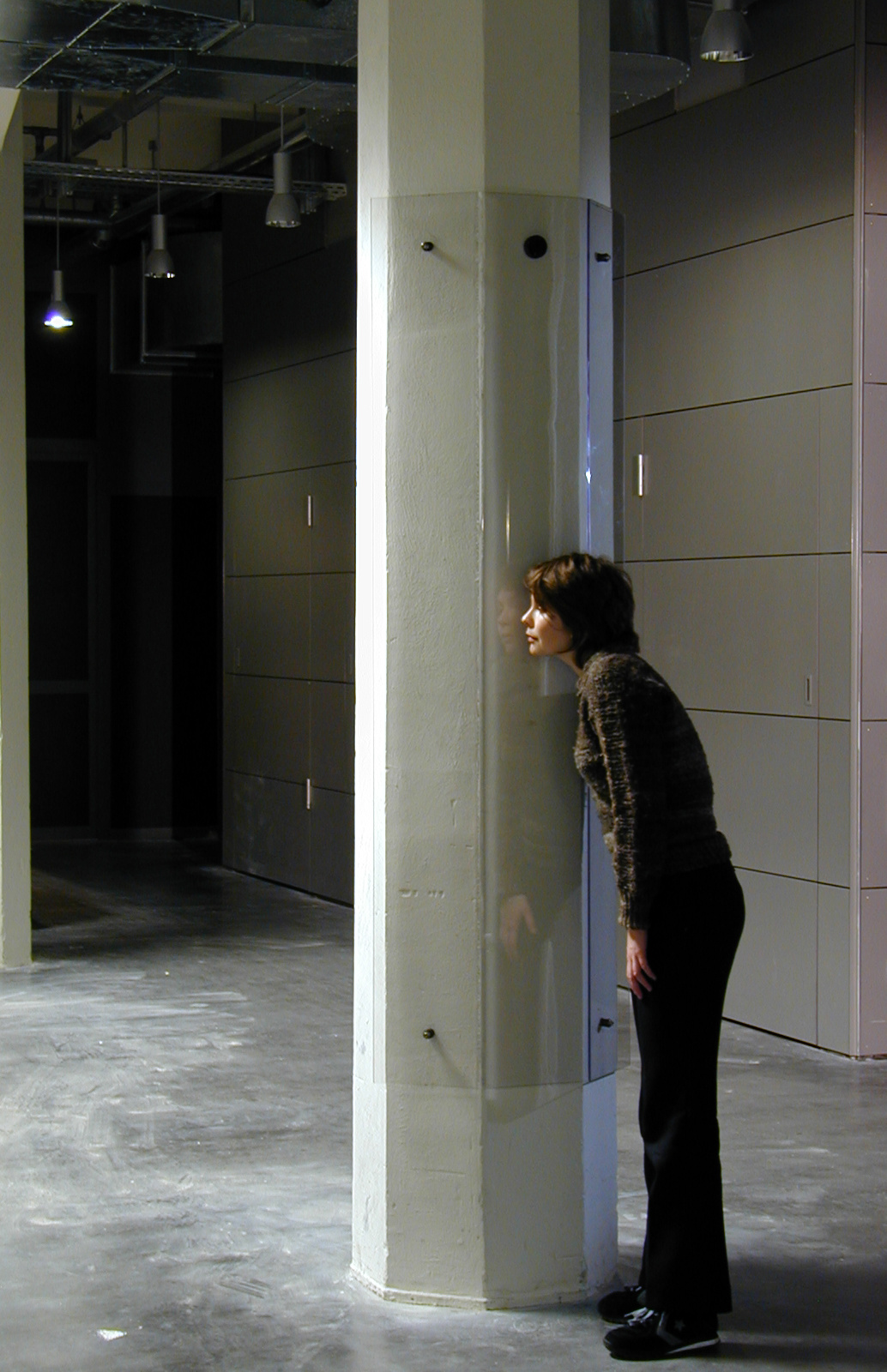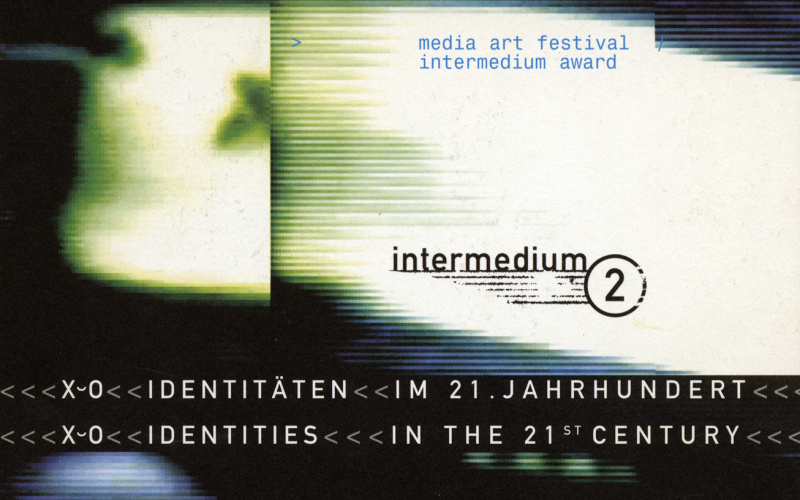- Exhibition
Jeffrey Shaw, Peter Weibel: Terminal Identities
Fri, March 22, 2002
- Location
- Foyer
New types of glass surfaces are being installed on the columns in the foyer of the ZKM, which function as acoustic membranes. Any visitor who places their ear against these glass surfaces can hear excerpts from texts by 20th-century authors who dealt with the changing concept of the subject in the post-industrial age of the information society. In the context of relativizing the self-sufficiency of the subject, science fiction literature has developed the concept of the terminal subject, which is colonized by machines.
“The entire planet is being developed into terminal identity and complete surrender,” wrote William S. Burroughs in Nova Express in 1964. Science fiction literature has coined the term “terminal identity” for this postmodern subject without a fixed body, but with a variable and contingent body for the multiple divisions of the subject, for the subject with a variable identity that can pass through different positions in the course of its life. Thomas Pynchon, William S. Burroughs, Raymond Federman, the OuLiPo group in France (Raymond Queneau, Georges Perec), John Hawkes, William Gass, Kathy Acker, J. G. Ballard, Robert Sheckley, Philip K. Dick, William Gibson, Bruce Sterling, and others have elaborated on these topoi.
The Austrian novelist Robert Musil also analyzed the uncertainty of the post-industrial individual with regard to historical concepts of identity in his novel with the telling title The Man Without Qualities. “He senses that this order is not as solid as it appears; no thing, no self, no form, no principle is secure...” (R. Musil).
With texts by:
Brian Aldiss, Isaac Asimov, Roland Barthes, Samuel Beckett, William S. Burroughs, George Chambers, E. E. Cummings, Philip K. Dick, Anna Elkins, Raymond Federman, William Gibson, E. T. A. Hoffmann, Homer, Identity Runners, Edmond Jabès, Else Lasker-Schüler, Robert Musil, Ovid, Fernando Pessoa, Edgar Allan Poe, Jean-Paul Sartre, Robert Louis Stevenson, Paul Valéry, Laurence and Andy Wachowski.
Sonus Lux
The transparent acoustic panels were originally designed by Jeffrey Shaw for the work Sonus Lux (1987). It was commissioned to mark the 200th anniversary of the Felix Meritis building in Amsterdam and allowed passers-by to hear music coming from the panels attached to the exterior walls of the building, as if it were coming from the walls themselves. In this way, the installation suggested that one was listening to the acoustic memories of the Felix Meritis building, which had hosted numerous concerts over the course of its 200-year history.

